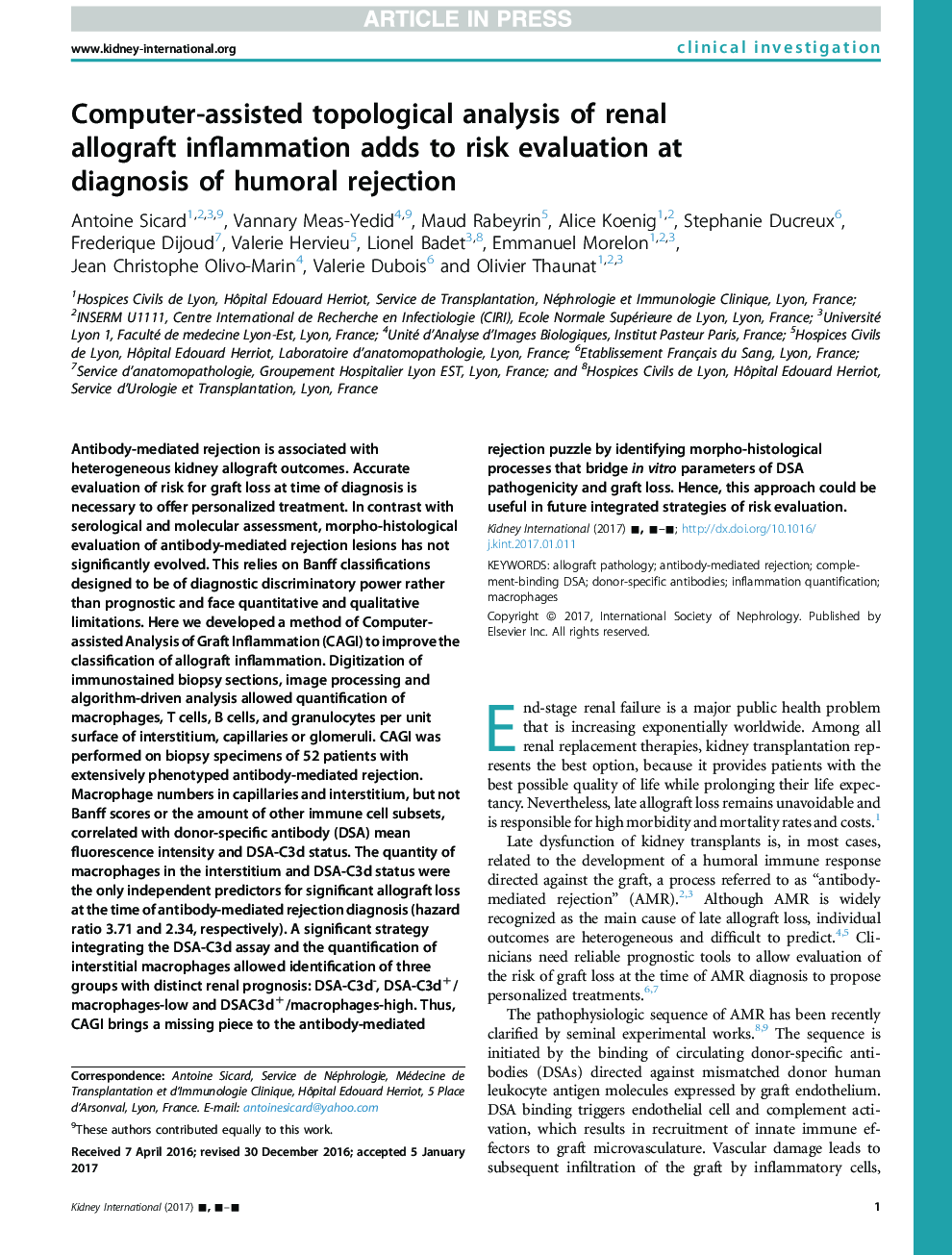| کد مقاله | کد نشریه | سال انتشار | مقاله انگلیسی | نسخه تمام متن |
|---|---|---|---|---|
| 5688084 | 1409776 | 2017 | 13 صفحه PDF | دانلود رایگان |
عنوان انگلیسی مقاله ISI
Computer-assisted topological analysis of renal allograft inflammation adds to risk evaluation at diagnosis of humoral rejection
ترجمه فارسی عنوان
تجزیه و تحلیل توپولوژیک کامپیوتری از التهاب کبدی کلیوی به ارزیابی ریسک در تشخیص رد هومورال
دانلود مقاله + سفارش ترجمه
دانلود مقاله ISI انگلیسی
رایگان برای ایرانیان
کلمات کلیدی
موضوعات مرتبط
علوم پزشکی و سلامت
پزشکی و دندانپزشکی
بیماریهای کلیوی
چکیده انگلیسی
Antibody-mediated rejection is associated with heterogeneous kidney allograft outcomes. Accurate evaluation of risk for graft loss at time of diagnosis is necessary to offer personalized treatment. In contrast with serological and molecular assessment, morpho-histological evaluation of antibody-mediated rejection lesions has not significantly evolved. This relies on Banff classifications designed to be of diagnostic discriminatory power rather than prognostic and face quantitative and qualitative limitations. Here we developed a method of Computer-assisted Analysis of Graft Inflammation (CAGI) to improve the classification of allograft inflammation. Digitization of immunostained biopsy sections, image processing and algorithm-driven analysis allowed quantification of macrophages, T cells, B cells, and granulocytes per unit surface of interstitium, capillaries or glomeruli. CAGI was performed on biopsy specimens of 52 patients with extensively phenotyped antibody-mediated rejection. Macrophage numbers in capillaries and interstitium, but not Banff scores or the amount of other immune cell subsets, correlated with donor-specific antibody (DSA) mean fluorescence intensity and DSA-C3d status. The quantity of macrophages in the interstitium and DSA-C3d status were the only independent predictors for significant allograft loss at the time of antibody-mediated rejection diagnosis (hazard ratio 3.71 and 2.34, respectively). A significant strategy integrating the DSA-C3d assay and the quantification of interstitial macrophages allowed identification of three groups with distinct renal prognosis: DSA-C3d-, DSA-C3d+/macrophages-low and DSAC3d+/macrophages-high. Thus, CAGI brings a missing piece to the antibody-mediated rejection puzzle by identifying morpho-histological processes that bridge in vitro parameters of DSA pathogenicity and graft loss. Hence, this approach could be useful in future integrated strategies of risk evaluation.
ناشر
Database: Elsevier - ScienceDirect (ساینس دایرکت)
Journal: Kidney International - Volume 92, Issue 1, July 2017, Pages 214-226
Journal: Kidney International - Volume 92, Issue 1, July 2017, Pages 214-226
نویسندگان
Antoine Sicard, Vannary Meas-Yedid, Maud Rabeyrin, Alice Koenig, Stephanie Ducreux, Frederique Dijoud, Valerie Hervieu, Lionel Badet, Emmanuel Morelon, Jean Christophe Olivo-Marin, Valerie Dubois, Olivier Thaunat,
